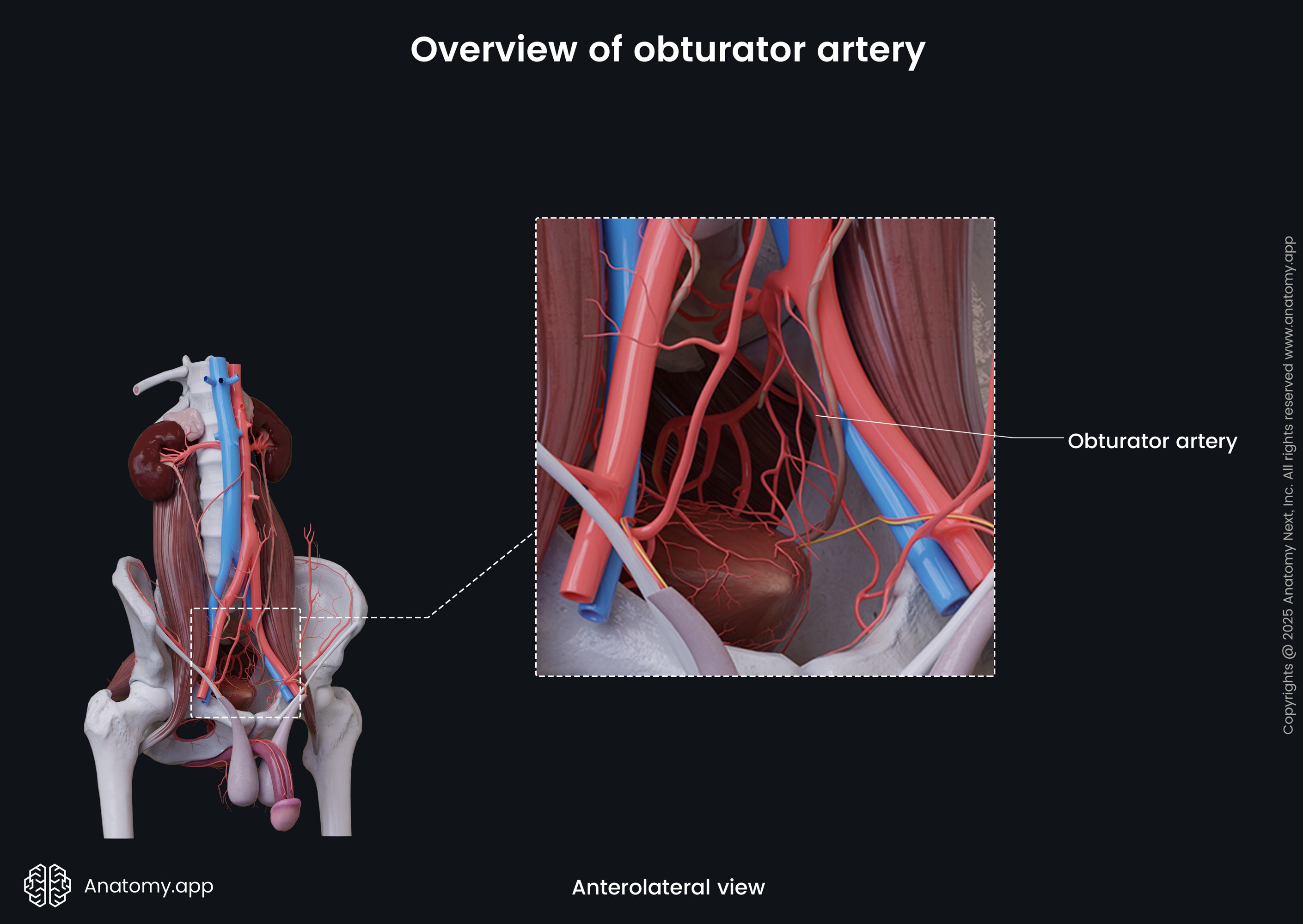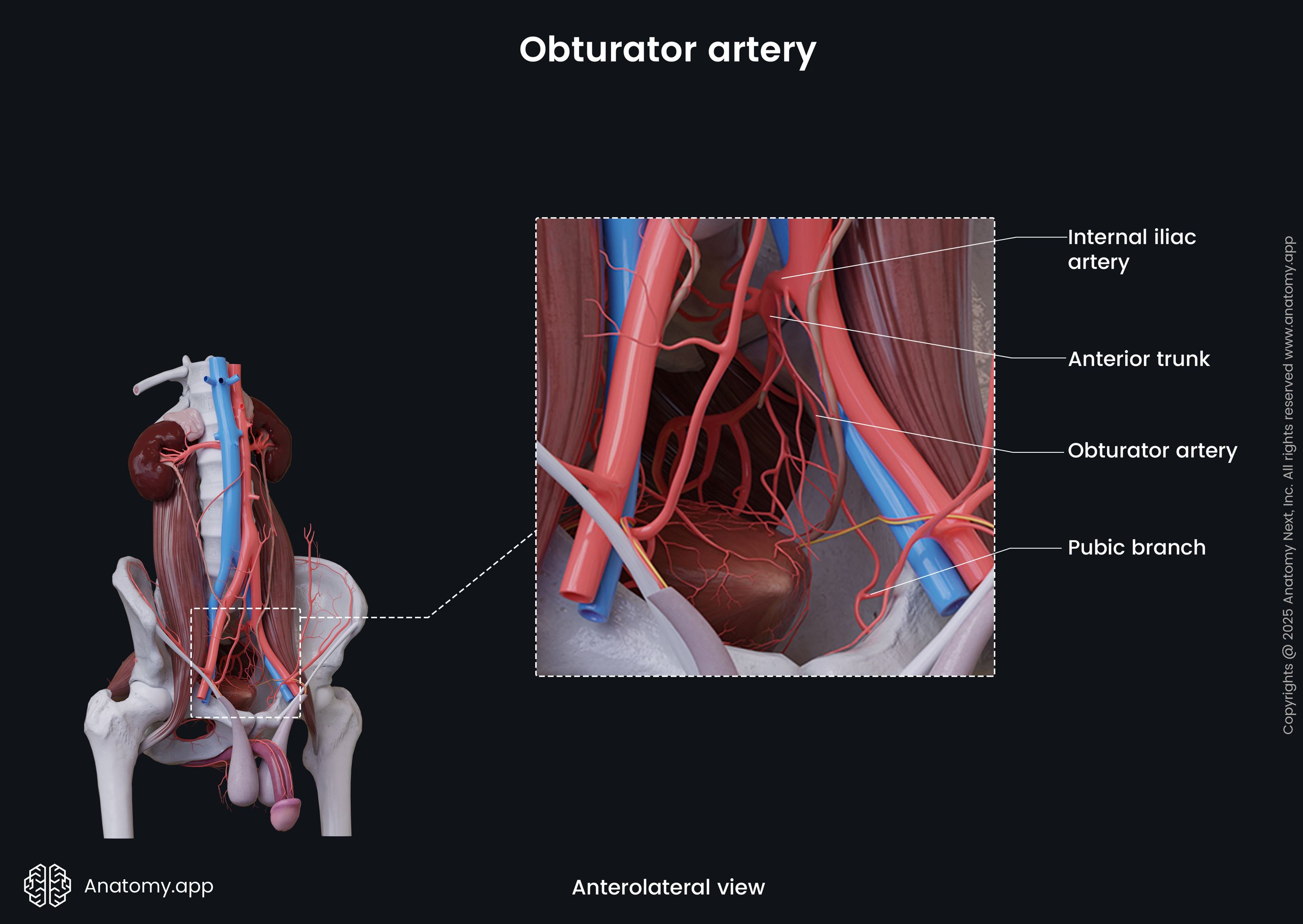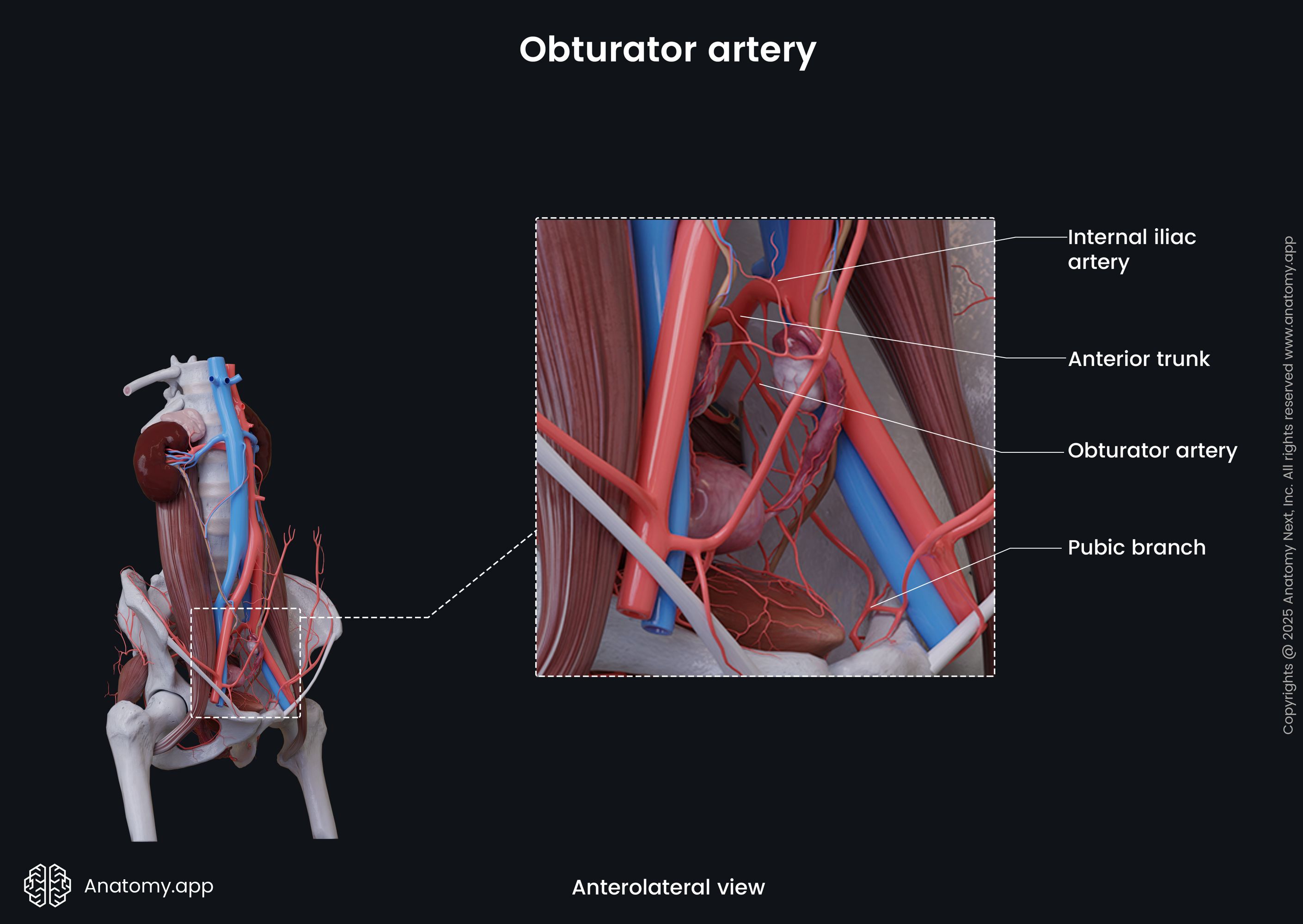- Anatomical terminology
- Skeletal system
- Joints
- Muscles
- Heart
- Blood vessels
- Blood vessels of systemic circulation
- Aorta
- Blood vessels of head and neck
- Blood vessels of upper limb
- Blood vessels of thorax
- Blood vessels of abdomen
- Blood vessels of pelvis and lower limb
- Arteries of pelvis and lower limb
- Veins of pelvis and lower limb
- Blood vessels of systemic circulation
- Lymphatic system
- Nervous system
- Respiratory system
- Digestive system
- Urinary system
- Female reproductive system
- Male reproductive system
- Endocrine glands
- Eye
- Ear
Obturator artery
The obturator artery (Latin: arteria obturatoria) is a blood vessel that arises from the anterior trunk of the internal iliac artery. It supplies blood to pelvic muscles, head of the femur, muscles and skin in the medial region of the thigh, as well as the knee capsule.


The obturator artery runs along the lateral wall of the lesser pelvis and leaves the pelvic cavity via the obturator canal. Then it runs to the thigh dividing into an anterior and a posterior branch to supply the muscles of the medial compartment of the thigh and the obturator externus.


The obturator artery gives off side branches including the pubic branch and acetabular branch. The acetabular branch runs through the acetabular notch to the ligament of the head of the femur supplying the head of the femur. The pubic branch of the obturator artery ascends to the pubic region and forms anastomosis with the pubic branch of the inferior epigastric artery.

